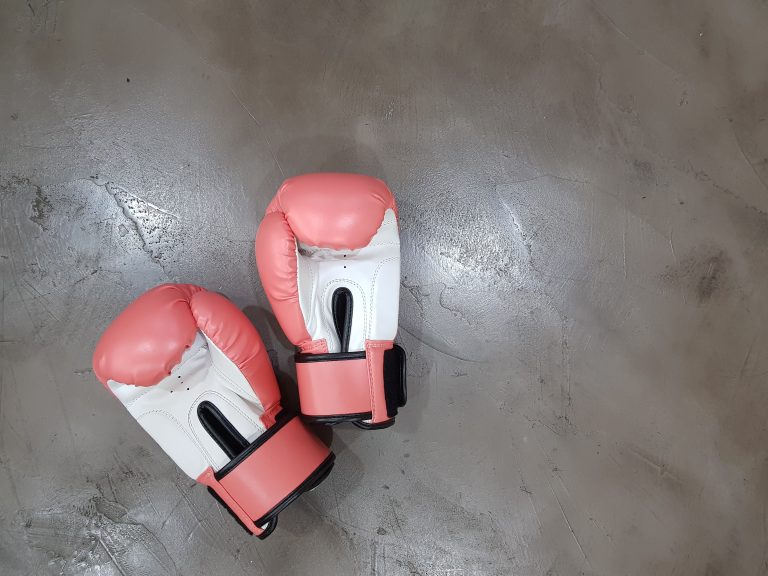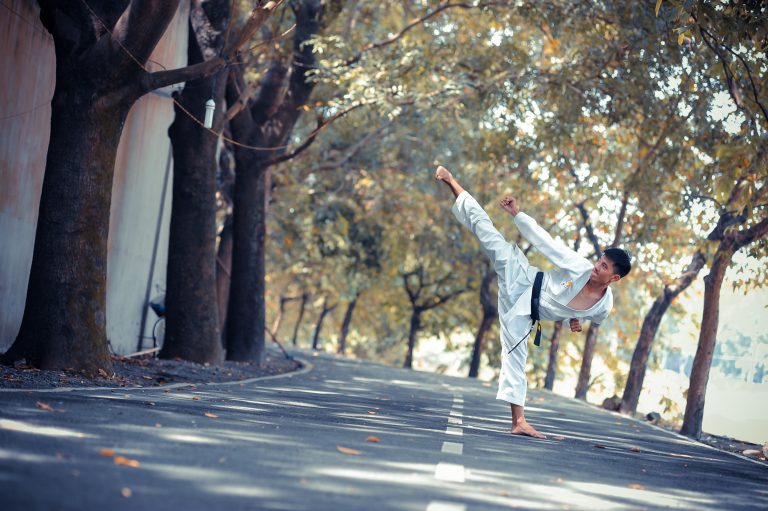What Comes After the White Belt in Karate?
Karate is a martial art that has been widely popularized over the years. It has become a symbol of discipline, strength, and respect. The journey in karate begins with the white belt, which is the beginner’s rank. From there, the student progresses to various other levels of ranks. In this post, we will discuss what comes after the white belt in Karate.
The Belt System in Karate
Karate uses a belt system to indicate a student’s rank and level of proficiency. The belt system starts from the white belt and moves up to the black belt. Each belt has a different color and signifies different levels of proficiency. Moving up to the next level requires dedication, focus, and lots of practice.
What Comes After the White Belt?
After the white belt, a student advances to the yellow belt. The yellow belt signifies that the student has learned basic techniques such as strikes, kicks, and blocks. The student is given the yellow belt after a few months of consistent practice and training.
The Yellow Belt
The yellow belt signifies sunshine and is seen as the beginning of a new day in the student’s journey. It represents the growth and development of the student’s basic techniques. The student is expected to learn more complicated techniques such as throws and combinations.
The Orange Belt
After the yellow belt, the student moves to the orange belt. The orange belt signifies growth and maturity. The student has already mastered basic techniques and is expected to perfect them while learning additional techniques. The orange belt represents the beginning of the intermediate level.
The Green Belt
Moving up from the orange belt, the student receives a green belt. The green belt signifies a new level of growth, self-confidence, and responsibility. The student is expected to have mastered all the basic techniques and is now learning more advanced techniques, including kata (a traditional form of karate).
The Blue Belt
After the green belt comes the blue belt. The blue belt is given to students who have developed the physical and mental discipline required for the more advanced katas. The student is expected to be more disciplined, focused, and committed.
The Purple Belt
The purple belt represents the student’s transition from the intermediate level to the advanced level. The student is expected to have advanced knowledge of katas, techniques, and principles. The purple belt signifies wisdom and experience in karate.
The Brown Belt
The brown belt is a symbol of the student’s further growth and development in the art of karate. The student is now considered an expert in karate and is expected to have extensive knowledge of all the katas, techniques, and principles. The brown belt represents the student’s mastery of the art.
The Black Belt
The black belt is the highest rank a student can achieve in karate. It represents the pinnacle of achievement, discipline, and character. The student is expected to have a deep understanding of the katas, techniques, and principles. The black belt signifies the student’s journey towards self-improvement, discipline, and personal growth.
What comes after the White Belt in Karate?
Introduction
Karate is not only about learning to punch and kick; it’s a way of life. The white belt is the first step in your journey towards becoming a black belt. Many beginners in karate wonder what comes after the white belt. In this blog post, we will answer some of the most frequently asked questions regarding this topic.
What is the Meaning of the White Belt in Karate?
The white belt in karate symbolizes purity and innocence. It represents a beginner’s level of knowledge and skill in the martial art. Receiving your white belt means that you have taken your first step into the world of karate.
What Comes After the White Belt in Karate?
After the white belt, you will move on to the yellow belt. In many schools, there are two types of yellow belts: solid yellow and yellow with a green stripe. The yellow belt represents the first stage of learning where students start to develop their basic techniques.
What Do I Need to Know to Earn My Yellow Belt?
To earn your yellow belt, you must demonstrate a solid foundation in karate basics. You will be expected to know the basic kicks, punches, and blocks. Additionally, you will need to learn a few kata (pre-set forms of movements) that are specific to your school. Finally, you will need to demonstrate proficiency in sparring.
What Comes After the Yellow Belt in Karate?
After the yellow belt, you will move on to the orange belt. The orange belt signifies that you have progressed beyond the beginner level and that you are starting to develop a deeper understanding of karate.
What Do I Need to Know to Earn My Orange Belt?
To earn your orange belt, you will be expected to demonstrate a higher level of proficiency in your karate basics. You will need to know more advanced kata, as well as more complex combinations of techniques. Additionally, you will need to hone your sparring skills and start to develop your self-defense techniques.
What Comes After the Orange Belt in Karate?
After the orange belt, you will move on to the green belt. The green belt represents a higher level of skill and knowledge in karate. At this point, you should start to feel confident in your abilities.
What Do I Need to Know to Earn My Green Belt?
To earn your green belt, you will need to demonstrate a thorough understanding of all the basics of karate. You will be expected to know all of the kata up to this point, as well as more advanced combinations of techniques. Additionally, you will need to develop greater situational awareness and start to work on your grappling skills.
What Comes After the Green Belt in Karate?
After the green belt, you will move on to the blue belt. The blue belt is a significant milestone in your karate journey. It signifies that you have achieved a high level of proficiency in the martial art.
What Do I Need to Know to Earn My Blue Belt?
To earn your blue belt, you will need to demonstrate mastery of all the basic techniques and kata. You will also need to start working on more advanced variations of these techniques. Additionally, you should start to develop your own unique style of karate.
What Comes After The White Belt In Karate: A Comprehensive Guide
Introduction
Karate is one of the most popular martial arts in the world. Practicing karate can improve your physical fitness, coordination, and discipline. When beginners start learning karate, they begin by earning a white belt. But what comes after the white belt? In this guide, we will take a closer look at the levels of karate and what comes after the white belt.
Levels Of Karate
In karate, there are typically nine levels, or ranks, that students must progress through to reach the highest level. Each level is identified by a different color belt. The ranks from lowest to highest are:
1. White Belt
2. Yellow Belt
3. Orange Belt
4. Green Belt
5. Blue Belt
6. Purple Belt
7. Brown Belt
8. Red Belt
9. Black Belt
Yellow Belt
The yellow belt is the first belt a student can earn after the white belt. To earn a yellow belt, a student must demonstrate an understanding of the basics of karate. This includes proper stances, punches, kicks, and blocks. At this level, students will start learning more advanced techniques and begin sparring.
Orange Belt
The orange belt is the next belt after the yellow belt. At this level, students will focus on increasing their speed and power. They will also start learning more complex techniques and sparring with more experienced students.
Green Belt
The green belt is the third belt in the karate ranking system. At this level, students will continue to refine their techniques and focus on improving their stamina and endurance. Students will also learn advanced katas, or forms, which are a series of predetermined movements.
Blue Belt
The blue belt is the fourth belt in the ranking system. At this level, students will start to focus on improving their timing and precision. They will also begin to learn more advanced sparring techniques and participate in tournaments.
Purple Belt
The purple belt is the fifth belt in the ranking system. At this level, students will start to focus on developing their creativity and personal style. They will also learn more advanced katas and self-defense techniques.
Brown Belt
The brown belt is the sixth belt in the ranking system. At this level, students will focus on refining their techniques and mastering advanced self-defense techniques. They will also learn more complex katas and participate in more advanced sparring.
Red Belt
The red belt is the second-highest level in karate. At this level, students will start to focus on teaching and helping other students progress through the ranks. They will also continue to refine their techniques and develop their own personal style.
Black Belt
The black belt is the highest level in karate. To earn a black belt, students must train for several years and demonstrate mastery of all of the techniques and skills learned in previous levels. At this level, students will also start to focus on teaching and passing on their knowledge to other students.
Conclusion
Karate is a challenging, but rewarding martial art that teaches self-discipline, physical fitness, and self-defense. After earning the white belt, students progress through nine levels to reach the highest level of mastery, the black belt. By understanding the levels of karate and the different skills required to progress through each level, students can set goals and work towards achieving them.
Inhaltsverzeichnis






